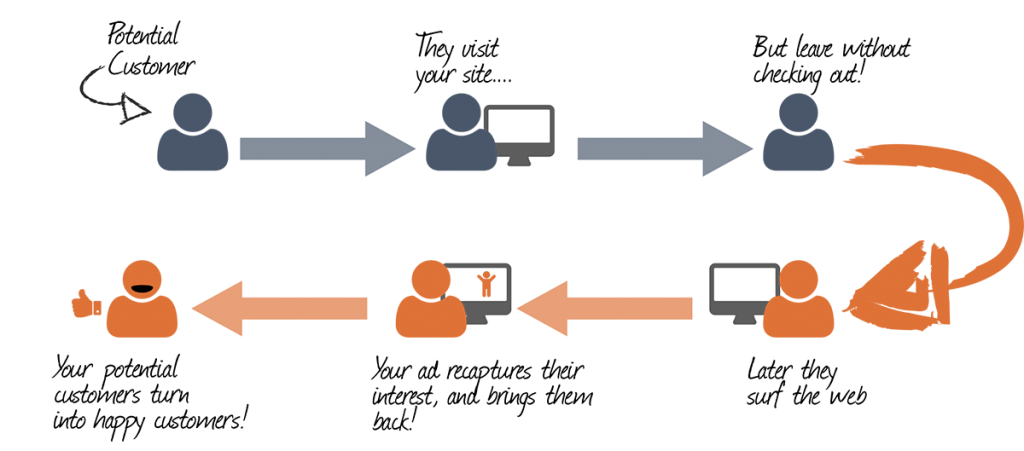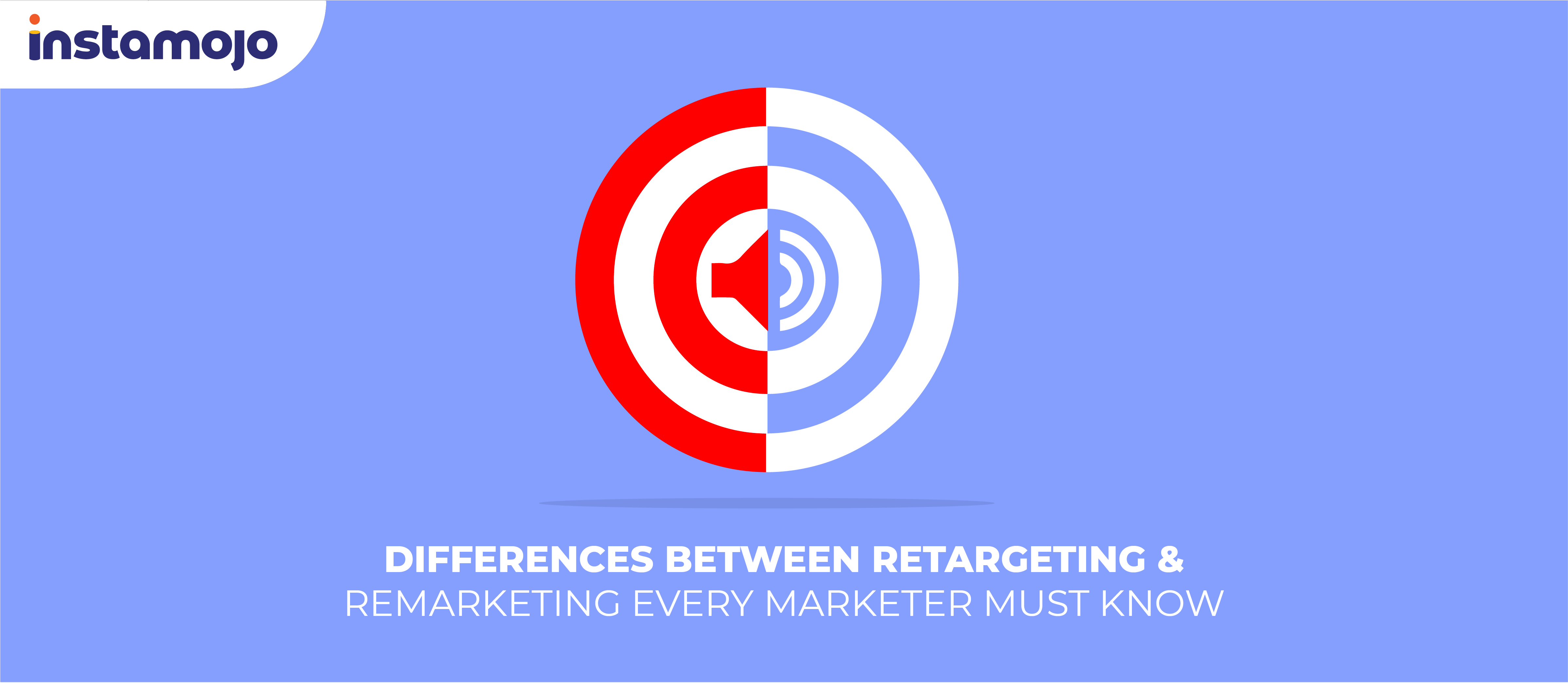Only 2% of people convert to becoming a sale the first time they visit your website.
A small number right? That’s because you probably did not work too hard on winning your customer over.
This is where retargeting comes in.
But wait, didn’t we discuss Remarketing already? Are they not the same thing?
No, in fact, there is a significant difference between the two.
Contents
What is retargeting?
Imagine someone walks into your store, looks around just leaves.
Retargeting literally means targeting over 98% of those customers who visited your website, looked around and left without converting to come back and convert into becoming a sale.
You might be getting website traffic, but you are not getting website sales.
Cookies!
Retargeting involves a specific set of strategies that involve using cookies and display ads to promote products and services to people who have previously visited a site.
The browser drops cookies on a visitor when they get onto your website. Cookies are data pieces that embed themselves in the users’ browser to enable website tracking. Cookies track visitors website activities and proceed to place placing your ads on other websites they visit.
Sly, right?
Who does retargeting apply to?
Retargeting strategies are only targeted at users who have previously visited your website but have not converted.
In short, retargeting falls under remarketing.

What is the difference between remarketing and retargeting:
To answer this, we need to know WHAT is remarketing? It can get a little confusing due to the overlaps of the functions and interchangeability of the terms. However, to be specific, remarketing involves email campaigns that are able to re-engage customers in their inbox.
In the marketers’ world, remarketing is primarily used to send emails to users who abandoned their carts without making a sale or a purchase on the website they visited.
Boiling down to the essentials of retargeting vs. remarketing, the main difference is seen in the way marketers develop strategies around the two.
Retargeting: Users see ads everywhere based on cookies.
Remarketing: Users get emails from the brands or websites that they abandoned. Remarketing involves collecting user information and creates lists which are used later to send emails.
Is retargeting a good idea for marketing?
Several visitors come to a website and leave without making a purchase. Retargeting is simply an effective tool that recalls those very visitors to your website with the intent to buy.
After retargeting with an ad, website visitors are 70% more likely to convert.
Retargeting works for marketers because it focuses your advertising spend on customers who know what your brand is all about.
Who benefits from retargeting?
All companies should effectively place a good retargeting strategy. However, it’s B2B companies that benefit the most from retargeting. Retargeting helps them generate more leads during a long purchase cycle.
A quick overview of how retargeting works:
– You have a visitor on your website
– They browse for some time, then leave without completing a call to action
– Your retargeting strategy springs into action and your ads appear on another web page that user visits.
– The user revisits your site, since they expressed an interest previously, and completes a call to action ( a purchase or a subscription).
How can retargeting and remarketing fit into your marketing strategy?
Remarketing is the broader spectrum of what retargeting does. While retargeting relies heavily on display ads, remarketing involves an array of marketing elements to get users to convert.
A few examples of remarketing techniques include email lists, personalized suggestions to users and brand incentives that involve add-on products.

Both remarketing and retargeting result in high ROI because you gather information based on customer interest even before trying to get them to buy your product. This works well because you are not forcing them to buy a product they may not even like.
Marketers need to take an integrated approach in today’s world, thanks to the clutter of advertisements out there. This is where remarketing and retargeting work in sync.
Remarketing uses the powers of content marketing, social media outreach through which your brand can capture, qualify and convert leads.
Content draws in readers through organic reach and dynamic remarketing tactics convert users that have shown interest in specific offerings which when combined, improves brand awareness and offers value to customers. Remarketing supports integrated communications; telling a brand that the message to customers must be consistent and transparent.
You might have an excellent marketing strategy in place, but do you have an online store that will get your customers to buy your products and services? Set up your free online store on Instamojo and learn more about how you can adopt an effective remarketing strategy with us.


1 comment
Indeed an useful article..!! Thanks again for sharing the difference between remarketing & retargeting.